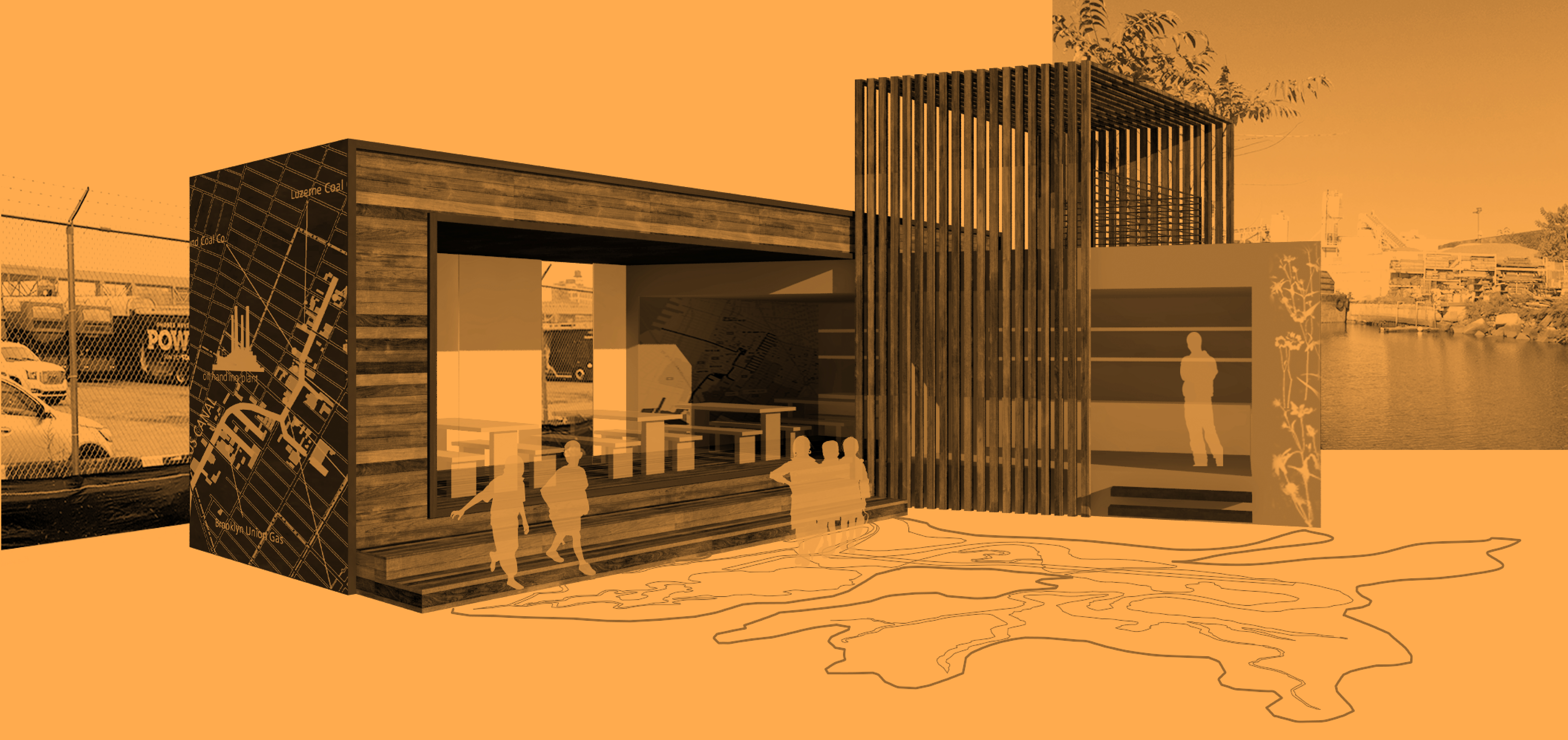
Gowanus residents walk by green infrastructure daily. Why not engage them in a citizen-driven approach to maintenance?
By Gita Nandan and Elliott Maltby
Garbage, drought, compaction, and weeds all hamper the performance of green infrastructure. Millions of dollars are being channeled into the construction of bioswales, green rooftops, and rain gardens; these installations require frequent maintenance to keep them working well.
The Gowanus waterway is an incredible opportunity to transform the public into active, informed stewards of our urban environment. Residents walk by green infrastructure elements on a daily basis; interactive, on-site training can equip them to respond to maintenance needs and to explain and advocate for green infrastructure to neighbors.
In collaboration with the Gowanus Canal Conservancy (GCC), we have designed a field station adjacent to the canal that will support their innovative education and volunteer programs. The GCC engages Gowanus residents as stewards to help maintain the neighborhood’s green infrastructure network. The Conservancy’s Science, Technology, Engineering, and Math (STEM) curriculum for middle school students, and adult Bioswale Stewardship Training Class teaches citizens to understand, advocate for, monitor, and maintain the canal’s ecosystem, including its many bioswales, which manage storm water and reduce sewer overflow.
The Gowanus Field Station is a sheltered outdoor classroom that doubles as a storm water “eco-machine”. The station embodies hands-on learning—it is capped with a native meadow green rooftop, captures and stores rainwater for reuse, and filters sink water through a rain garden. It features gathering spaces of varying sizes, a latticed roof deck for observation, an interactive laser cut map of the watershed, and a platform for water sampling cantilevered over the banks of the Gowanus.
We strongly believe green infrastructure can do more than manage storm water. Imagine a network of field stations built along the Gowanus Canal, providing space for people to observe and engage with distinct aspects of the waterway. Four field station typologies, addressing different ecological conditions, would create a shifting, composite understanding of the area, and recognize the intermingling of human and natural systems. Let’s use green infrastructure to create innovative public spaces that not only provide ecological services for the city, but also habitat for other species and places for human recreation, education, and stewardship.
–